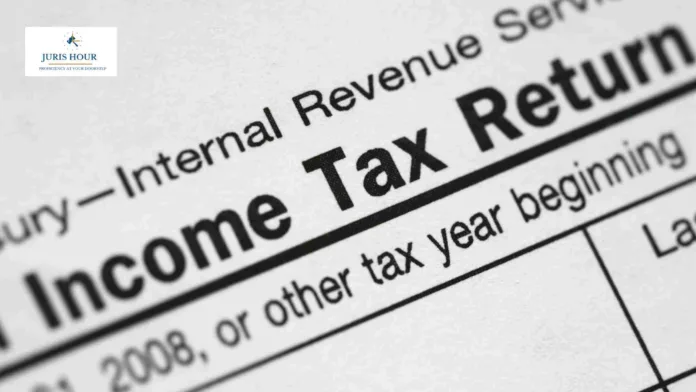The Indian government has implemented significant changes to the income tax structure for the Financial Year (FY) 2024–25. These changes aim to offer relief to individual taxpayers, simplify tax compliance, and enhance disposable income. One of the most impactful revisions is the overhaul of the New Tax Regime, which has now become the default choice for taxpayers.
Income Tax Slabs for FY 2024–25
New Tax Regime (Default)
The New Tax Regime, introduced in 2020, is now the default system for computing income tax, unless the taxpayer specifically opts for the old regime. It offers concessional tax rates while limiting the number of exemptions and deductions that can be claimed.
Revised Slabs for AY 2024–25:
| Annual Income (₹) | Tax Rate |
| Up to ₹4,00,000 | Nil |
| ₹4,00,001 – ₹8,00,000 | 5% |
| ₹8,00,001 – ₹12,00,000 | 10% |
| ₹12,00,001 – ₹16,00,000 | 15% |
| ₹16,00,001 – ₹20,00,000 | 20% |
| ₹20,00,001 – ₹24,00,000 | 25% |
| Above ₹24,00,000 | 30% |
Key Benefits:
- Standard deduction has increased from ₹50,000 to ₹75,000.
- Effective zero tax liability for incomes up to ₹12.75 lakh after standard deduction.
- Simplified filing and lower rates for those not availing of deductions like HRA, 80C, etc.
Old Tax Regime (Optional)
Taxpayers can still opt for the Old Tax Regime, which allows claiming various deductions and exemptions under the Income Tax Act.
Slabs under Old Regime:
| Annual Income (₹) | Tax Rate |
| Up to ₹2,50,000 | Nil |
| ₹2,50,001 – ₹5,00,000 | 5% |
| ₹5,00,001 – ₹10,00,000 | 20% |
| Above ₹10,00,000 | 30% |
Available Deductions:
- Section 80C (up to ₹1.5 lakh for LIC, PPF, ELSS, etc.)
- Section 80D (health insurance premium)
- House Rent Allowance (HRA)
- Leave Travel Allowance (LTA)
- Interest on home loans (Section 24), among others
Key Changes in FY 2024–25
- Increased tax-free limit under the New Regime due to higher standard deduction
- Introduction of a 25% slab for middle-income earners (₹20–24 lakh)
- Elimination of “angel tax”
- Revised capital gains tax structure: STCG now at 20%; LTCG at 12.5% with an exemption limit of ₹1.25 lakh
- Reduction in TDS rates across several transaction categories
Choosing Between New and Old Regimes: An Informed Approach
Taxpayers must carefully evaluate both regimes to determine which is more financially beneficial based on their income, deductions, and lifestyle. Here’s how you can make a rational choice:
1. Evaluate Deductible Expenses
If you typically invest in tax-saving instruments (under Section 80C), pay life or health insurance premiums, have a home loan, or claim HRA, the Old Regime may be more beneficial due to its wide array of allowable deductions.
For example:
- A salaried individual with ₹1.5 lakh in 80C deductions, ₹25,000 in 80D (health insurance), and ₹2 lakh housing loan interest under Section 24 could see significant tax savings in the Old Regime.
2. Simplicity vs. Optimization
The New Regime is simpler: it has lower tax rates and fewer compliance burdens. It’s ideal for:
- Young professionals without significant investments or housing loans
- Freelancers and gig workers without a structured salary
- Taxpayers who prefer ease over aggressive tax planning
In contrast, the Old Regime benefits those who:
- Make consistent investments in tax-saving schemes
- Have dependents or elderly family members (higher 80D limits)
- Live in rented housing and claim HRA
3. Income Bracket Analysis
At lower income levels (up to ₹12.75 lakh), the New Regime is generally more favorable due to the enhanced standard deduction and lower rates.
For higher income earners:
- If deductions exceed ₹3–4 lakh, the Old Regime may still offer savings
- If deductions are minimal, the New Regime usually results in lower tax liability
4. Flexibility and Annual Review
The option to switch regimes annually (for salaried individuals) gives taxpayers the flexibility to make year-by-year decisions based on financial circumstances. For those with variable incomes or inconsistent deductions, this is a key advantage.
Comparative Example
| Annual Income (₹) | Old Regime Tax (₹) | New Regime Tax (2024) (₹) | New Regime Tax (2025) (₹) | Savings Over 2024 New Regime (₹) |
| 7,50,000 | 65,000 | 26,000 | 0 | 26,000 |
| 10,00,000 | 1,17,000 | 52,000 | 0 | 52,000 |
| 15,00,000 | 2,73,000 | 1,45,600 | 1,09,200 | 36,400 |
| 20,00,000 | 4,29,000 | 3,01,600 | 2,08,000 | 93,600 |
Conclusion
The income tax structure for AY 2024–25 marks a significant shift towards simplification and lower tax burdens, especially under the New Regime. While it offers substantial benefits to taxpayers with fewer deductions, the Old Regime remains valuable for those who engage in tax planning through eligible investments and expenses.
Taxpayers are advised to compare both regimes annually and choose based on their specific financial profile.Consulting a tax professional can also help optimize your choice and ensure compliance with the latest rules.

